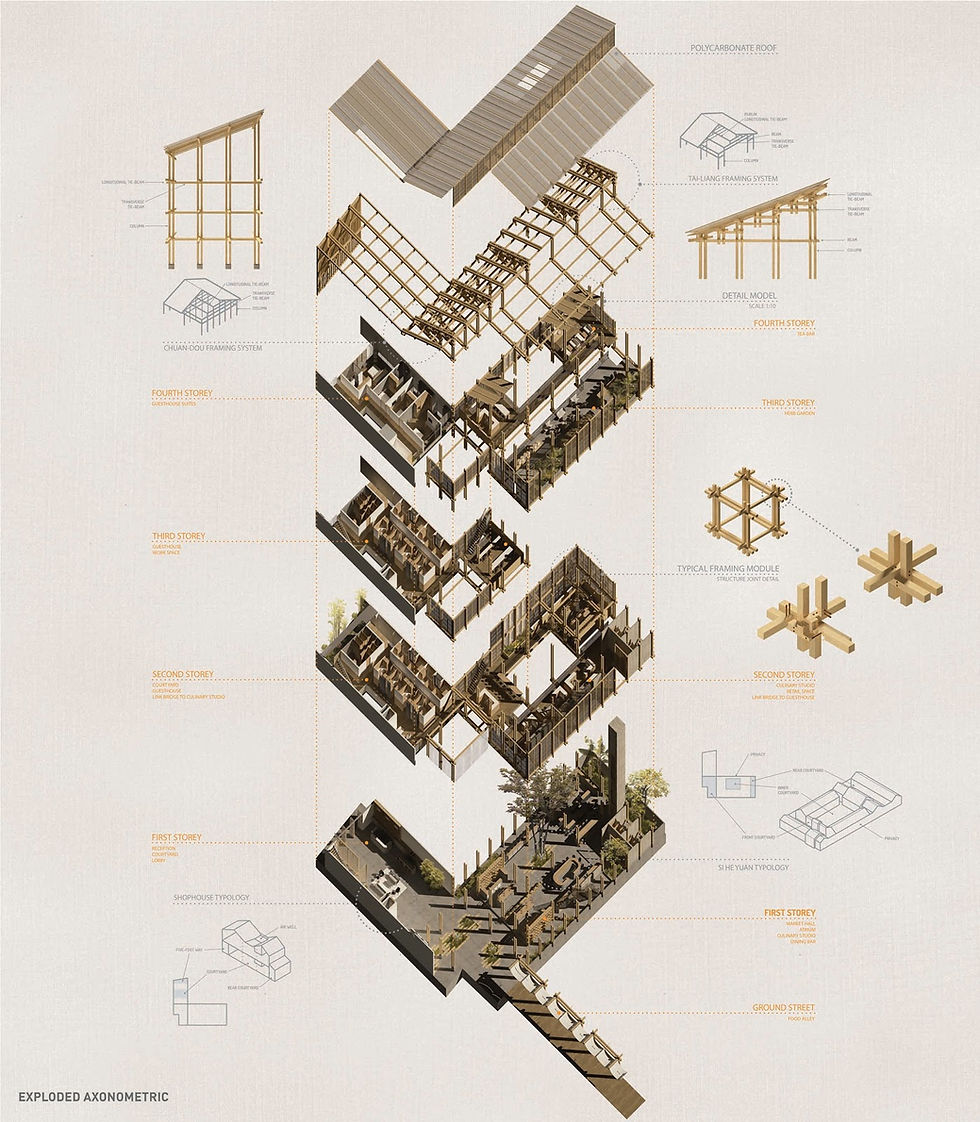Zoe Lim Kai Ee
- Grad Show 2019
- Mar 4, 2019
- 2 min read
Updated: May 22, 2019
Inheritance of Singapore Chinese Culture: A Taste of Culture
Conservation and Heritage
Supervisor - Dr. Ho Puay Peng
“Apathy” sparks the anxiousness of cultural and identity practices and questioned the Singaporean Chinese to re-think their Chinese-ness and the affiliation towards Chinese culture. While the fast-moving cultural landscape has become more diversity flow of immigrants and loss in Chinese culture is even more profound in the new generation, many of the traditional cultural forms were unable to self-renewal and loss of relevance have been driven to extinction. The thesis examines how various tangible and intangible cultural forms play symbolic meanings in shaping Singaporean Chinese identity in the constantly evolving landscape and society.
Situated at Lor 24A Geylang, the intervention as a food pavilion expressing the continuation of the Chinese customs and identity with the community through curating the experiences in the shared identity of symbolic meaning through food and festive in the Singapore Chinese culture. Traditionally an agricultural society, when the Chinese moved to Singapore, they were involved more in trading, but the culture that centered in agriculture and the 24 solar terms has been subsumed in every aspect of Chinese culture. Design intention response to the elements of 24 solar term where it reflects the importance of food, festive, climate and people in our daily life. The space as a medium for community engagement through the function of food for thought and enhance the sharing identity of the community. The continuation of the community identity become a place to experience the sharing of food ingredients and type in related to local food culture which enhance the intangible and tangible cultural form of the Chinese culture.
The intervention foster the continuation of the community identity through the sharing and food identity in Chinese culture. In Chinese customs and culture, the celebration of the begin of each season reflect the changes in climate, agriculture production, and solar-term associated festivals. The form of gathering become a big part of the celebration where ritual and practices will perform as a tradition and reunion. With the community engagement in sharing food, the intervention curates spaces for the community to experience and remember the value of food culture and the balance of nature and health through the engagement of making.
The architecture language explores the potential of narratives and the sense of openness by expressing the natural expression of the identity in the choice of material and architecture. Just like the architectural language of the typology of shophouse and si he yuan, where a continuation of courtyard space, enhancing a layer of the connection with nature, “ inside is life, outside is nature” and bring people in the community together. Timber modular express the architectural language of typical Chinese architectural structural framework in organizing grid spatial layout.
All in all, the intervention emphasize the continuation of the Chinese customs and identity with the community in Geylang as a medium to foster the shared meanings and value through the function of food for thought to the new generations.
Links & Contact:
Thesis Design Journal - https://issuu.com/zoelimke/docs/zoe_design_thesis_journal_
Email - zoelimke@outlook.com
Instagram - @thezoogoeswild








Comments